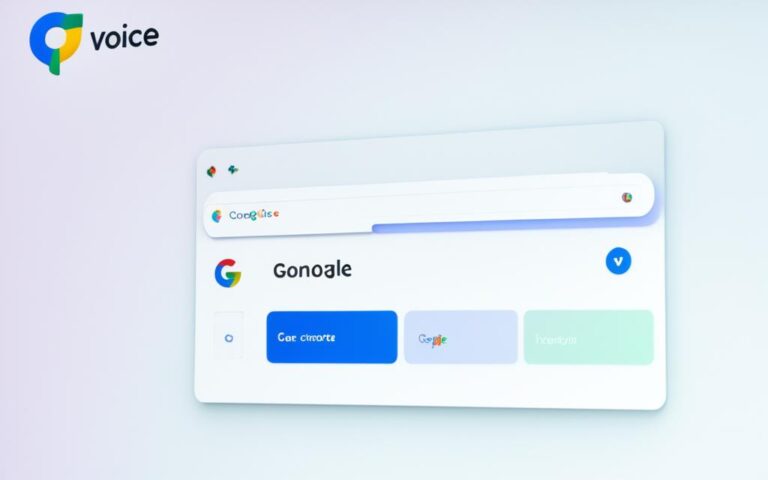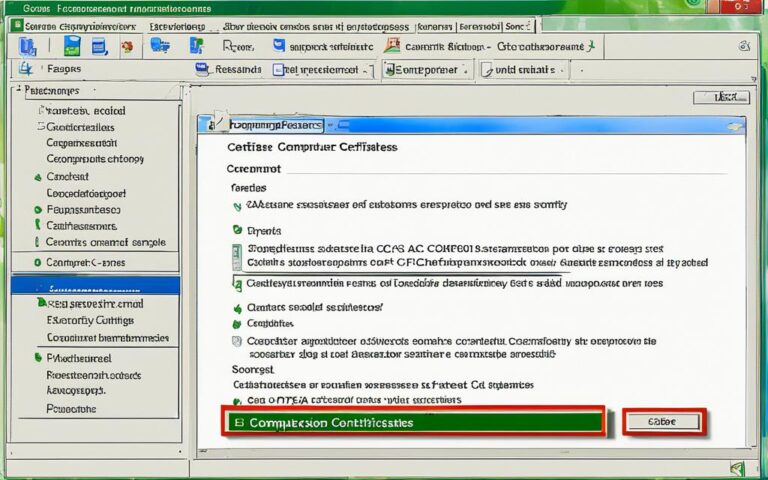Understanding the cost of goods manufactured (COGM) is key to grasping production costs and checking profitability. It helps management spot cash drains, set prices, and monitor business growth. COGM covers all costs tied to making a product, like direct labor, indirect labor, raw materials, and overhead costs1.
Breaking down COGM shows direct material costs, direct labor costs, and overhead costs1. Overhead costs include things like utilities, rent for the factory and warehouse, and machine depreciation1.
To figure out COGM, use this formula: COGM = Beginning inventory + Costs incurred during production — Ending inventory1. This method lets you compare actual and planned manufacturing costs1. COGM looks at manufacturing costs over a set period. It includes labor, materials, and manufacturing overhead but leaves out some costs like SG&A, R&D, interest, and income taxes1.
On the other hand, total manufacturing cost (TMC) focuses on direct material costs and skips indirect material and factory overhead expenses1. It’s crucial to know the difference between COGM and cost of goods sold (COGS). COGS covers direct costs like materials, labor, factory overheads, utilities, and depreciation12.
Indirect materials, which are needed for production but not directly tied to products, are often part of factory overhead costs in COGM calculations1. These costs need careful thought when figuring out the total.
Key Takeaways:
- Accurate calculation of COGM is essential for understanding production costs and analyzing profitability.
- COGM includes all costs for making a product, like labor, raw materials, and overhead costs.
- The formula for calculating COGM is: COGM = Beginning inventory + Costs incurred during production — Ending inventory.
- COGM helps compare actual and planned manufacturing costs.
- Total manufacturing cost (TMC) includes direct material costs but leaves out indirect material and factory overhead expenses.
Check out the image above to see how the cost of goods manufactured process works.
What is Cost of Goods Manufactured (COGM)?
What is Cost of Goods Manufactured (COGM)?
The cost of goods manufactured (COGM) is a key financial measure. It shows the total costs a manufacturing business spends to make finished goods. It’s vital for understanding how well a manufacturing business is doing financially.
COGM includes direct materials, direct labor, manufacturing overhead, and changes in work in process inventory3. This metric helps us see how efficient and profitable a manufacturing operation is.
Direct materials are the raw stuff used in making things. Direct labor is the pay for workers directly involved in making products. Manufacturing overhead covers all other costs not directly tied to a product, like rent and utilities.
To find the COGM, add up the beginning work in process, direct materials used, direct labor, and manufacturing overhead3. The formula is:
COGM = Beginning work in process + Direct materials used + Direct labor + Overhead
Knowing the COGM helps a manufacturing business understand its production costs. This knowledge helps in making better decisions to improve operations and increase profits.
This material doesn’t have specific numbers or comparisons about COGM3. But, understanding and calculating it is key in the manufacturing world.
Benefits of Tracking COGM
Tracking COGM is crucial for a manufacturing business for several reasons. It helps companies see if production costs match sales4. By keeping an eye on COGM, businesses can check their gross margin and overall profit. This helps in setting the right prices and making production decisions.
By looking at COGM, management can spot areas to cut costs or improve efficiency4. This includes checking materials, labor, and overhead to boost the company’s net income.
Also, tracking COGM lets businesses create a detailed schedule of production costs and sales4. This involves looking at different parts and calculations. It gives a clear view of what it costs to make and sell products.
Improving COGM can make a manufacturing operation more efficient and profitable. Companies can work on making production smoother, reducing waste, and better using resources. This helps lower costs and stay competitive in the market.
Understanding Work in Process (WIP) Inventory
Work in process (WIP) inventory is key in the COGM calculation and managing production5. It’s about goods that are being made but not yet finished.
Manufacturers keep an eye on WIP to keep their operations running smoothly. A long WIP time can mean delays and higher costs5. A short WIP time can lead to better cash flow and a faster production process.
Good inventory management suggests cutting down the time products are in the WIP stage5. By doing this, manufacturers can boost productivity, cut costs, and deliver products faster. This makes customers happier.
Different industries have their own targets for the WIP stage length5. The ideal time depends on the industry’s specific needs. This allows for a more efficient production process tailored to the industry.
Example Calculation of COGM
Let’s look at an example from a furniture manufacturing company. Here’s the data:
| Component | Amount ($) |
|---|---|
| Direct Materials | 100,000 |
| Direct Labor | 50,000 |
| Manufacturing Overhead | 60,000 |
| Beginning WIP Inventory | 10,000 |
| Ending WIP Inventory | 30,000 |
| COGM | 190,000 |
In this example, the COGM is worked out like this:
COGM = Direct Materials + Direct Labor + Manufacturing Overhead + Beginning WIP Inventory – Ending WIP Inventory
COGM = 100,000 + 50,000 + 60,000 + 10,000 – 30,000
COGM = 190,000
By accurately calculating COGM, businesses get valuable insights into their production costs. This helps in making informed decisions to improve operations and increase profits4.
In conclusion, the cost of goods manufactured (COGM) is a vital financial metric for manufacturing businesses. It covers all the expenses during production. By tracking COGM and understanding its parts, businesses can check their production costs, optimize operations, and stay profitable in the competitive manufacturing industry.
Calculation of Cost of Goods Manufactured
Knowing the cost of goods manufactured (COGM) is key for businesses. It shows the total cost to make goods for sale3. COGM includes direct materials, labor, overhead, and changes in work in process (WIP) inventory. To find COGM, add up the beginning WIP inventory, direct materials, labor costs, and overhead expenses3.
This gives a full view of production costs. It helps with making better financial choices in manufacturing3.
To work out COGM, use this formula: COGM = Beginning WIP Inventory + Total Manufacturing Cost – Ending WIP Inventory1. The total manufacturing cost (TMC) is made up of direct materials, labor, and overhead1. Direct materials are the raw stuff used in making things. Direct labor is the pay for workers directly making the product1. Overhead includes things like rent, utilities, and wear and tear on equipment1.
Getting COGM right is vital for knowing how profitable goods are and setting the right prices3. By tracking production costs, companies can make better decisions to increase their profit margins4. Tools like Katana make calculating COGM easier and more accurate, helping companies keep an eye on costs and profits1.
| Components | Cost |
|---|---|
| Beginning WIP Inventory | £50,000 |
| Direct Materials Used | £100,000 |
| Direct Labor Costs | £75,000 |
| Manufacturing Overhead Expenses | £30,000 |
| Total Manufacturing Cost | £255,000 |
| Ending WIP Inventory | £20,000 |
| COGM | £235,000 |
Note: The values in the table are for illustrative purposes only and not based on actual data.
By figuring out the cost of goods manufactured, companies can keep an eye on their costs. This helps them make more money and set the right prices for their goods1. Keeping track of COGM also shows how it relates to the cost of goods sold (COGS). COGS includes direct costs like materials, labor, and overhead, but not other costs like SG&A, R&D, and taxes31. Cloud manufacturing systems make tracking COGM easier by keeping an eye on materials and inventory1.
Understanding Total Manufacturing Cost (TMC)
Total manufacturing cost, or the total cost of production, shows the full cost of making things over a certain time. It includes direct materials, direct labor, and manufacturing overhead.
The main parts of total manufacturing cost are:
- Direct materials: These are the physical materials used in making things. It covers the cost of raw materials used directly in making products.
- Direct labor: This is the pay for workers who make the products.
- Manufacturing overhead: These are indirect costs of making things. They include things like rent, utilities, upkeep, and insurance.
The formula for figuring out total manufacturing cost is:
Total Manufacturing Cost = Direct Materials Cost + Direct Labor Costs + Manufacturing Overhead6Knowing the total manufacturing cost is key for a manufacturing business. It helps with:
- Pricing strategies: It helps set the right prices for products to make a profit.
- Supply chain optimization: Knowing the total cost helps spot ways to cut costs in the supply chain.
- Cost management: It helps find waste in making things, leading to cost savings.
Many manufacturing companies use Computerized Maintenance Management Software (CMMS) to work out total manufacturing costs well. CMMS gathers accurate data, keeps important documents, sets standard operating procedures (SOPs), and looks at data over time for better cost calculations6.
Image: Example of Total Manufacturing Cost Calculation
Understanding total manufacturing cost and its parts helps manufacturing businesses make smart choices. This leads to better operations and more profit.
Exploring Work in Process (WIP) Inventory
Work in process inventory, or WIP, is key in manufacturing. It’s the total value of materials, labor, and overhead for unfinished products.
By calculating WIP, businesses can see the value of unfinished goods at the end of each period. This gives them insight into production progress.
WIP has two main parts: beginning WIP and ending WIP. Beginning WIP is the value of unfinished products from the last period. Ending WIP is the remaining costs after deducting finished goods in the current period7.
Managing WIP well is vital for companies. It helps reduce lead times and ensures timely delivery, making customers happier8.
It also helps with cash flow by reducing inventory capital. This lets businesses use their money better and quickly meet market demands8.
Technology like MES and ERP software helps track WIP inventory in real-time. This gives businesses better control and visibility over their inventory7.
From a financial view, WIP is an asset on the balance sheet. It affects the cost of goods sold (COGS) and the company’s financial health7.
In conclusion, WIP inventory is vital in manufacturing and sequential production industries. Managing it well helps with production efficiency, cash flow, waste reduction, and profit increase. By tracking and managing WIP, businesses can use resources better, reduce capital needs, and improve production processes8.
Importance of Cost of Goods Manufactured (COGM)
Understanding the cost of goods manufactured (COGM) is key for manufacturers. It helps them grasp production costs, check profitability, and set product prices. COGM is crucial for managing costs, handling inventory, improving the supply chain, and comparing performance.
COGM shows a company’s production costs over time. It covers direct materials, direct labor, and manufacturing overhead costs. By knowing COGM, manufacturers can see how well their operations work. This helps them make smart choices to boost profits and grow sustainably.
“Direct materials cost takes a significant chunk of the manufacturing and overall business cost,”9 showing why it’s important to watch and manage material costs. This ensures efficient use of resources and cuts down on waste.
“Labor costs include wages, benefits, and benefits offered to full-time and part-time employees,”9 pointing out the need to control labor expenses. This keeps the company competitive and fairly rewards its workers.
Finished goods inventory is crucial for making money in manufacturing. It’s the last step before products hit the market. Tracking COGM helps manage inventory levels well, avoiding too much stock or not enough.
Knowing about work in process (WIP) inventory is key for a better supply chain and smoother production. Looking at WIP helps spot problems, cut down lead times, and boost efficiency.
“Using ERP software helps reduce unnecessary resources without compromising quality in manufacturing,”9 highlighting tech’s role in managing costs. ERP systems automate and streamline processes, making it easier to track COGM and improve finances.
Looking at all these costs and using precise COGM data helps companies set the right prices for profit. By understanding how production costs, sales, and profit margins link, manufacturers can make smart decisions. This leads to better profitability and business success.
| Statistical Data | Value |
|---|---|
| Total Manufacturing Cost | $425 |
| Beginning Inventory | $250 |
| Ending Inventory | $200 |
| Purchases During the Period | $550 |
| Value of Previous Year’s Finished Goods | $100 |
| Beginning WIP Inventory | $750 |
| Ending WIP Inventory | $175 |
| COGM (Cost of Goods Manufactured) | $1,000 |
| COGS (Cost of Goods Sold) | $600 |
| Finished Goods Inventory | $500 |
Reference: Statistical data from10.
Relationship between COGM and Cost of Goods Sold (COGS)
Cost of Goods Manufactured (COGM) is key to tracking manufacturing costs and checking profitability. Knowing how COGM relates to the Cost of Goods Sold (COGS) helps us see a company’s financial health and performance.
COGM is the total cost of making all finished goods in a certain period. COGS, however, is the cost of making goods sold in that period2. It includes things like raw materials, labor, and overheads directly linked to making goods.
To find COGS, add the starting finished goods inventory, COGM, and subtract the ending finished goods inventory. This method shows the cost of goods sold in a period3. The formula is: COGS = Beginning Finished Goods Inventory + COGM – Ending Finished Goods Inventory.
By keeping an eye on COGM and COGS, manufacturers understand their production costs and the effect of sold goods on their finances. This info is key for checking profits, setting prices, and making smart business choices. Managing COGM and COGS well helps manufacturers cut costs and boost gross profits2,3.
It’s crucial to track and manage finished goods inventory for both COGM and COGS. The ending inventory level impacts both figures, so keeping accurate sales and inventory records is essential2,3.
The link between COGM and COGS shows the need for good cost management and accurate accounting in manufacturing. By carefully calculating and watching these metrics, companies can learn a lot about their finances. This helps them make smart decisions to grow and succeed in a tough market.
Indirect Materials in COGM
Indirect materials are key in figuring out the Cost of Goods Manufactured (COGM). They are supplies used in making things but can’t be directly linked to one product or unit. They help with the overall making process.
Indirect materials include things like machine oil, cleaning stuff, and small tools for making things. These are needed for production to run smoothly but aren’t part of the final product or a specific unit’s work4.
When we work out COGM, we add these indirect materials to the factory overhead costs. Factory overhead covers indirect costs like materials, labor, and other indirect expenses.
Adding indirect materials and other factory overhead to COGM gives a true picture of what it costs to make products. These products then go into the finished goods inventory for sale4.
Knowing about indirect materials and their effect on COGM is vital for managing costs and controlling inventory in making things. By keeping an eye on indirect material costs, companies can find ways to cut costs and boost profits.
Calculation Example of COGM
Let’s look at a real-life example to grasp how Cost of Goods Manufactured (COGM) works for a furniture maker. We’ll see how different costs add up to get the COGM.
A furniture maker makes wooden tables. To find the COGM, we add up direct materials, labor, and overhead costs11. Direct materials cost $500 for the wood, hardware, and finishes needed for the tables.
Labor is a big part too. Imagine the maker has 15 workers, each working 8 hours a day for $20 an hour. This means the labor costs $2400 ($20 * 8 * 15).
Manufacturing overhead costs are also key. These include things like equipment upkeep, utilities, and rent for the factory. Let’s say the monthly overhead is $1000.
Now, let’s figure out the COGM using the COGM formula12:
COGM = Beginning Work in Process Inventory + Total Manufacturing Costs – Ending Work in Process Inventory
The beginning WIP inventory is $800, and the ending WIP is $40013. Plugging these into the formula, we get:
COGM = $800 + ($500 + $2400 + $1000) – $400
After simplifying, the COGM for the furniture maker is $4300.
Knowing the COGM helps the maker understand total manufacturing costs. It aids in setting prices, managing inventory, and controlling costs. It’s also key for figuring out the Cost of Goods Sold (COGS) on the income statement11.
Understanding COGM lets the maker check its profit, use resources better, and improve financially. Tracking COGM over time helps spot areas to cut costs, making operations more efficient and boosting profits12.
This image shows how to calculate COGM with the given data. It makes the process clearer for the reader.
Importance of Tracking COGM
Tracking the Cost of Goods Manufactured (COGM) is key for manufacturers. It helps them understand their manufacturing costs. This is crucial for making smart decisions about pricing and managing costs14.
Knowing the costs helps businesses run better. Tracking COGM shows the direct costs like raw materials, labor, and overhead. This info is key for checking product profits and making smart choices15.
Tracking COGM also helps set the right prices. By knowing production costs, manufacturers can figure out the best selling price. This ensures they make enough profit and stay competitive16.
Keeping costs under control is another big plus of tracking COGM. Manufacturers can spot rising costs and act fast. This leads to saving money, better deals with suppliers, and smoother operations14.
Good inventory management also depends on tracking COGM. It helps decide how much stock to keep. This avoids too much or too little stock, cuts storage costs, and boosts sales. Plus, it helps plan better, reducing waste and improving production15.
Performance Benchmarking and Profitability Analysis
Tracking COGM lets manufacturers see how they stack up against others. By comparing costs, they can spot where they can do better. This info is great for improving and growing the business16.
It also helps with profit analysis. By looking at COGM and revenue, manufacturers can see their profit and margin. This shows if they’re doing well or not. It helps them check their processes, find ways to save, and make better decisions14.
In short, tracking COGM is crucial for understanding costs and analyzing profits. It helps with pricing, controlling costs, managing inventory, and comparing performance. By tracking COGM well, manufacturers can improve their costs, profits, and growth.
Benefits of Using Manufacturing Software for COGM
Manufacturing software is key in today’s industries. It makes processes smoother and boosts efficiency.
It automates COGM calculations with real-time data. This means companies get accurate financial insights quickly17. It helps in planning production and managing stock better.
It also helps with inventory management by showing stock levels in real-time. This lets businesses manage their stock well and cut costs17. It helps reduce waste by tracking materials accurately during production17.
Production planning gets a big boost from this software too. It helps plan and schedule production better, cutting downtime and boosting productivity18. This leads to better use of resources, shorter lead times, and happier customers.
Manufacturing software also offers detailed reports and analysis. This helps companies understand their total manufacturing costs17. They can track costs like materials, labor, and overhead. This helps spot areas to cut costs and make smart decisions on pricing and sales17.
When combined with ERP software, its benefits grow even more. It helps manage supply chains, warehouses, and transport better18. This leads to more efficient operations and lower costs across the whole manufacturing process.
In summary, using manufacturing software brings big advantages for companies. It helps with COGM calculations, inventory, production planning, and cutting costs. By using these advanced tools, manufacturers can stay ahead in a fast-changing market.
Conclusion
Knowing the cost of goods manufactured (COGM) is key for manufacturing firms. It shows the real cost of making products and helps check how well the business is doing. By adding up material, labor, and factory overhead costs, COGM shows the true price of goods. This helps companies make better decisions to increase profits.
COGM is crucial for figuring out the cost of goods sold (COGS). COGS covers all costs to make goods or services, like materials, labor, and overhead. It helps find the gross profit by subtracting COGS from sales. Keeping an eye on COGS helps control costs and manage stock well.
Also, knowing the value of finished goods is key to understanding a company’s financial health. It shows the value of goods made and boosts production efficiency. To find the value of each item, add up direct materials, labor, and overhead costs. By tracking this, companies can make better choices and run their businesses better.
In summary, getting the cost of goods manufactured right is vital for manufacturing firms. By grasping COGM, COGS, and finished goods inventory, companies can streamline their operations, cut waste, and boost profits. Using methods like absorption costing gives a full picture of product costs. Good cost control and stock management are key to a manufacturing business’s long-term success.
FAQ
Why is knowing the cost of goods manufactured important?
Knowing the cost of goods manufactured is key for understanding production costs and checking profitability. It helps in setting prices and tracking business growth.
What is the cost of goods manufactured (COGM)?
The cost of goods manufactured (COGM) shows the total expenses for making finished goods. It covers direct costs like raw materials and labor, and indirect costs like overheads.
How is the cost of goods manufactured calculated?
To find the cost of goods manufactured, add the beginning work in process inventory to the total manufacturing cost. Then, subtract the ending work in process inventory. This method requires knowing the total manufacturing cost and the beginning and ending work in process inventory values.
What is total manufacturing cost (TMC)?
Total manufacturing cost, or total cost of production, shows the total cost of making goods over a period. It includes direct materials, labor, and overhead costs. Direct materials are the raw materials used, direct labor is the workers’ wages, and overhead covers indirect materials, labor, and other costs.
What does work in process inventory (WIP) represent?
Work in process inventory (WIP) is the value of unfinished products. It’s the total of beginning WIP from the last period and ending WIP within the current period. It includes materials, labor, and overhead costs.
Why is tracking the cost of goods manufactured important for manufacturers?
Tracking the cost of goods manufactured helps manufacturers understand production costs and profitability. It aids in setting prices, controlling costs, managing inventory, and comparing performance. This gives insights into the efficiency and effectiveness of manufacturing operations.
What is the difference between cost of goods manufactured (COGM) and cost of goods sold (COGS)?
COGM covers all costs of producing finished goods. COGS only includes costs of goods sold in the same period. COGS is the sum of beginning inventory, COGM, and ending inventory minus ending inventory.
What are indirect materials in the cost of goods manufactured (COGM) calculation?
Indirect materials are supplies used in production but not directly linked to a product. They’re part of the overhead costs in COGM. Examples include lubricants, cleaning supplies, and small tools.
Can you provide an example of the cost of goods manufactured (COGM) calculation?
Sure! Consider a furniture maker. The COGM includes raw materials, labor, overhead, beginning WIP, and ending WIP. It’s the sum of these values.
Why is it important to track the cost of goods manufactured (COGM)?
Tracking COGM is key for understanding manufacturing costs and profitability. It helps in setting prices, controlling costs, managing inventory, and comparing performance. It highlights areas where costs might be rising and guides corrective actions.
What are the benefits of using manufacturing software for calculating the cost of goods manufactured (COGM)?
Manufacturing software, like an ERP system, automates COGM calculations from real-time data. It supports live inventory management and production planning, making manufacturing more efficient.
Why is accurate calculation of the cost of goods manufactured important for a manufacturing business?
Accurate COGM calculation is vital for manufacturers. It reveals production costs, profitability, and supports cost control and inventory management. This knowledge helps in making informed decisions to improve operations and financial performance.
Source Links
- https://katanamrp.com/cost-of-goods-manufactured/ – How to Calculate the Cost of Goods Manufactured (COGM)
- https://www.investopedia.com/terms/c/cogs.asp – Cost of Goods Sold (COGS) Explained With Methods to Calculate It
- https://www.numerade.com/ask/question/which-of-the-following-correctly-computes-cost-of-goods-manufactured-multiple-choice-beginning-work-in-processdirect-materials-useddirect-laborovermeadending-work-in-process-beginning-work-i-53867/ – Which of the following correctly computes the cost of goods manufactured? Multiple Choice Beginning work in process + Direct materials used + Direct labor + Overhead – Ending work in process Beginning work in process – Cost of goods sold + Ending finished goods Beginning work in process + Direct
- https://corporatefinanceinstitute.com/resources/accounting/cost-of-goods-manufactured-cogm/ – Cost of Goods Manufactured (COGM)
- https://www.wallstreetprep.com/knowledge/wip-work-in-progress/ – Work in Progress (WIP)
- https://www.getmaintainx.com/blog/total-manufacturing-costs-how-and-why-to-calculate-them – Total Manufacturing Costs: How and Why to Calculate Them
- https://letstranzact.com/blogs/work-in-process-inventory – Work-in-Process Inventory (WIP): Definition, Formula, and Examples | TranZact
- https://reliability.thenonstopgroup.com/work-in-process-inventory/ – Work in Process Inventory | 6 Powerful Benefits of Managing WIP Inventory Levels
- https://greatlakesfreight.com/app/2021/12/02/what-is-the-cost-of-goods-manufactured/ – Greatlakes Freight & Transport | What Is The Cost Of Goods Manufactured?
- https://www.shipbob.com/blog/finished-goods-inventory/ – How to Calculate Finished Goods Inventory & Why it’s Important for Business
- https://synder.com/blog/cost-of-goods-manufactured-formula/ – Cost of Goods Manufactured Formula: Key Insights into Manufacturing Cost Calculations
- https://www.unleashedsoftware.com/blog/cost-of-goods-manufactured – Cost of Goods Manufactured (COGM) Formula & How to Calculate
- https://www.inflowinventory.com/blog/cost-of-goods-manufactured-formula/ – Calculate Your Cost of Goods Manufactured With This Formula
- https://www.freshbooks.com/hub/accounting/cost-of-goods-sold-cogs – Cost of Goods Sold: What Is It and How To Calculate
- https://blog.hubspot.com/sales/cost-of-goods-sold – How to Calculate Cost of Goods Sold in Your Business
- https://www.netsuite.com/portal/resource/articles/financial-management/cost-of-goods-sold-cogs.shtml – A Guide to Cost of Goods Sold
- https://www.oneadvanced.com/news-and-opinion/total-manufacturing-cost-what-is-it-and-how-to-calculate-it/ – Total manufacturing cost: What is it and how to calculate it
- https://www.qad.com/blog/2021/07/total-manufacturing-cost-formula – Total Manufacturing Cost Formula: Metrics that Matter | QAD Blog


















